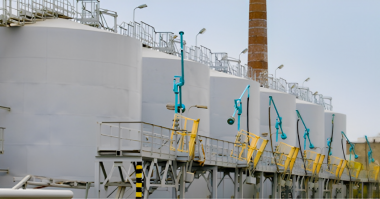A check valve – also at times called a clack valve, non-return valve, or one way valve – allows for fluid to flow one way only, hence the “check”. The valves have two ports, one for entry and another for exit. Check valves are used in many operations and can even be found around the house, such as in the basement sump pump. Most check valves are self-automated and do not have to be operated, although there are some valves that offer handles or stems.
Check valves can be used to move air, condensate, liquids, steam, slurries, and other types of media.
Types of Check Valves
In the past, the most commonly used type of check valve was a swing valve, but check valves have now evolved to include ball, dual plate (also called double-door), piston, lift, and spring assisted (in-line, nozzle, and silent swing). There are also many types of custom check valves that are specially constructed with a certain sealing mechanism and/or materials to suit the application it is used in.
Check Valve Applications
Check valves have a wide variety of uses including but not limited to:
- Boilers
- Chemical Feed Pumps
- Condensate Lines
- Cooling Towers
- Header and Injection Lines
- HVAC equipment
- Loading Racks
- Marine Applications
- Nitrogen Purge Lines
- Pressure Pumps
- Pump And Compressor Discharge
- Steam Lines
- Thermal Heat Transfer Fluid
- Utilities
- Vacuum Breakers
- Wash-Down Stations
Pro’s and Con’s of Check Valves
We’ve previously discussed How Check Valves Function, and Why They Would be Selected Over Other Valve Types and have touted the benefits of the durability of check valves when properly installed and maintained. They are also good at preventing back flow: where fluid moves from the exit port to the entry. Best of all, they will continue to work even during power outages and in severe weather.
However, given the closing mechanism of a check valve, some are not ideal for movinggases or certain types of fluids due to the closing mechanism not moving fast enough to shut out the media. Check valves internally seal by relying on media back-pressure instead of the mechanical force that is often used in other types of valves. As a result, allowable seat leakage rates are higher in check valves. However, there are elastomer seals available that provide near zero leakage in check valves which broadens their application and even allows them to be used to move some gases.
Advances in Check Valves
Proco Products will be presenting their newest valve technology at this year’s American Water Works Association Conference to be held at the Anaheim Convention Center in California. They will join a showcase of over 500 exhibitors and expanded learning opportunities including a pipe tapping contest, meter madness, people’s choice, and best of the best in water taste tests. Over 1,000 presenters will take part in over 100 unique sessions.
SIMS SIMSITE® Structural Graphite Composite Valves – The only valve that is impervious to corrosion from salt water, this valve was designed for the U.S. Navy and is made from SIMS special engineered composite. The valve showed no leakage when it was pressure tested and excelled when subjected to 27″ Hg over 15 minutes without any vacuum losses.
Duck Bill Check Valves – Just as the name suggests, these check valves are shaped like a duck’s bill in order to eliminate back flow and seal failure around entrapped solids. They are meant to replace older conventional check valves, such as the flap gate. The valves come in a flanged, in-line, and folded bill type.
For More on Check Valves
Check Valve Installation and Benefits – This resource from TLV discusses the essentials of check valves including:
- Is it always necessary to install a check valve downstream of a steam trap?
- Does installation of a check valve prevent water hammer?
- Check valve restrictions
After Sales Service for Pumps, Valves and Controls – Now that you have a check valve, how to maxmimize its performance and maintain it? This piece from Achema Online shows users how to make the most of their check valves, including how to integrate them into an existing pump and control system.
CRAFT Tech – CFD Analyses for Valves – This free white paper analyzes the role CFD plays in identifying and characterizing unsteady flow dynamics that impact valve performance as well as predicting steady performance. The paper includes sections on hydrodynamic and fluid dynamic instabilities, as well as flow transients associated with valve timing and valve scheduling.





Comments